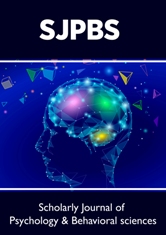-
Research ArticleView abstract
 PDF
PDF
 Full text
Objectives: Several renowned authors have highlighted the benefits of keeping a diary, such as AMIEL, P. LEAUTAUD, G. MAY on an autobiographical level, E. de GONCOURT, M. GALAY, S. de BEAUVOIR. We have also to cite STENDHAL, notably describing his great emotion seeing the Frescoes of the monumental Camposanto SANTA CROCE of PISA. Do they realize incidentally their own therapy and is it possible to use that mean to help suffering people...... ReadMore
Full text
Objectives: Several renowned authors have highlighted the benefits of keeping a diary, such as AMIEL, P. LEAUTAUD, G. MAY on an autobiographical level, E. de GONCOURT, M. GALAY, S. de BEAUVOIR. We have also to cite STENDHAL, notably describing his great emotion seeing the Frescoes of the monumental Camposanto SANTA CROCE of PISA. Do they realize incidentally their own therapy and is it possible to use that mean to help suffering people...... ReadMore -
Mini ReviewView abstract
 PDF
PDF
 Full text
Since 20 or 30 years, practitioners observe an increase of new kind of patients- often present in large number during some W.E., – who are visiting a general hospital emergency space, with bastard disorders, with existential, familial, or social connotations. They give complaints, which are often difficult to assess in the context of their request and of their behavior. Their symptoms seem unusual and difficult to identify...... ReadMore
Full text
Since 20 or 30 years, practitioners observe an increase of new kind of patients- often present in large number during some W.E., – who are visiting a general hospital emergency space, with bastard disorders, with existential, familial, or social connotations. They give complaints, which are often difficult to assess in the context of their request and of their behavior. Their symptoms seem unusual and difficult to identify...... ReadMore -
Research ArticleView abstract
 PDF
PDF
 Full text
have shown that the number of injuries among professional athletes has increased. Restoring athletes to competitive activity in the shortest possible time brings both mental and physical challenges. The purpose of this quantitative research project was to explore how injuries affect athletes’ mental health, more specifically depression, among college students enrolled at a small southern university institution in the United States...... ReadMore
Full text
have shown that the number of injuries among professional athletes has increased. Restoring athletes to competitive activity in the shortest possible time brings both mental and physical challenges. The purpose of this quantitative research project was to explore how injuries affect athletes’ mental health, more specifically depression, among college students enrolled at a small southern university institution in the United States...... ReadMore -
Research ArticleView abstract
 PDF
PDF
 Full text
The objective of this study was to relate the variables of organizational competence development practices and turnover intentions, thus explaining that the perception of internal employability mediates the relationship between the two variables mentioned above. The sample used in this study comprises 126 participants surveyed in two geographical areas: Portugal and Angola. The results indicate that training, job rotation and employability have a negative and significant effect on turnover intentions...... ReadMore
Full text
The objective of this study was to relate the variables of organizational competence development practices and turnover intentions, thus explaining that the perception of internal employability mediates the relationship between the two variables mentioned above. The sample used in this study comprises 126 participants surveyed in two geographical areas: Portugal and Angola. The results indicate that training, job rotation and employability have a negative and significant effect on turnover intentions...... ReadMore -
Research ArticleView abstract
 PDF
PDF
 Full text
This study aims to investigate the effect of perceived organizational support on organizational commitment among local government employees and its relationship with presenteeism. The sample consists of 234 participants, employees of local authorities in Portugal...... ReadMore
Full text
This study aims to investigate the effect of perceived organizational support on organizational commitment among local government employees and its relationship with presenteeism. The sample consists of 234 participants, employees of local authorities in Portugal...... ReadMore -
Research ArticleView abstract
 PDF
PDF
 Full text
Preferences for music are due to different music features like tempo, mode or arousal. It can also come from internal criteria like music that has been played during childhood or the aesthetic pleasure. Repeating the music can also lead to preference for this music. The aim of this study was to see if childhood musical experiences affect adulthood preferences. Seventy-five adults passed the test in which we used the lullaby “Brother John” and created three audios that has the same music features as it...... ReadMore
Full text
Preferences for music are due to different music features like tempo, mode or arousal. It can also come from internal criteria like music that has been played during childhood or the aesthetic pleasure. Repeating the music can also lead to preference for this music. The aim of this study was to see if childhood musical experiences affect adulthood preferences. Seventy-five adults passed the test in which we used the lullaby “Brother John” and created three audios that has the same music features as it...... ReadMore -
Research ArticleView abstract
 PDF
PDF
 Full text
The success of organizations in meeting their established objectives is intrinsically linked to the motivation of existing human resources. These elements are essential in influencing the creation of strategies that build an organization’s competitive advantage, leaving it in a favourable position in relation to its competitors [1]. Machado et al. [2] believe that “managing people means giving them opportunities to feel or stay motivated.” Nevertheless, organizations must recognize the importance of recognizing their employees’ abilities and potential for development, as not everyone has the same conditions...... ReadMore
Full text
The success of organizations in meeting their established objectives is intrinsically linked to the motivation of existing human resources. These elements are essential in influencing the creation of strategies that build an organization’s competitive advantage, leaving it in a favourable position in relation to its competitors [1]. Machado et al. [2] believe that “managing people means giving them opportunities to feel or stay motivated.” Nevertheless, organizations must recognize the importance of recognizing their employees’ abilities and potential for development, as not everyone has the same conditions...... ReadMore -
OpinionView abstract
 PDF
PDF
 Full text
Consider the dilemma of an unwanted child. Someone is pregnant and does not want the child. Who will adopt the child? Who will compensate the pregnant person for the burden of carrying and birthing the child? You have a firm stance: you want the child to be born and raised to adulthood. However, you have no intention of adopting or financially supporting the child or paying the person for bearing the burden of birthing the child. What are the options? Should we “force” the pregnant person to have and keep the child? Should we use society’s concentrated brute force-police, armed forces, and courts-to achieve this goal?..... ReadMore
Full text
Consider the dilemma of an unwanted child. Someone is pregnant and does not want the child. Who will adopt the child? Who will compensate the pregnant person for the burden of carrying and birthing the child? You have a firm stance: you want the child to be born and raised to adulthood. However, you have no intention of adopting or financially supporting the child or paying the person for bearing the burden of birthing the child. What are the options? Should we “force” the pregnant person to have and keep the child? Should we use society’s concentrated brute force-police, armed forces, and courts-to achieve this goal?..... ReadMore
Lupine Publishers Group
Lupine Publishers
ISSN: 2641-1768
Scholarly Journal of Psychology and Behavioral Sciences
Scholarly Journal of Psychology and Behavioral Sciences (SJPBS) is an open access journal emphasizes the publication of novel investigations that contribute innovative knowledge and understanding to fields of Behavioral sciences and psychology. The journal mainly considers high quality research focusing on applied and theoretical researches that boost understanding of cognitive, motivational, affective, and behavioral psychological phenomena. Those psychological phenomena can be in individual, group, work, private and public sectors. The journal publishes several types of articles such as unique investigations or meta-analyses, Theory development articles, Theory determined empirical investigations, Qualitative research on Phenomenon etc. Our key motive is to welcome submissions that discover the Psychological facts of human behavior and we also encourages studies of human behavior in original situation and combination of basic psychological principles and theories with applied work and organizational phenomena.



















.png)
.jpg)

